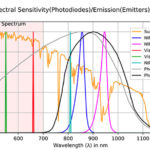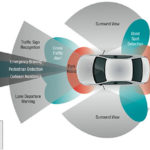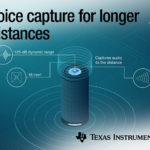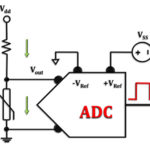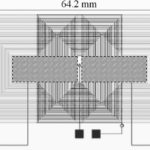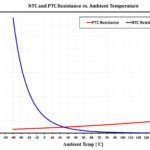Texas Instruments introduced the industry’s smallest 36-V, 4-A power module in a quad flat no-lead (QFN) package. The TPSM53604 DC/DC buck module’s 5-mm-by-5.5-mm footprint enables engineers to shrink the size of their power supply by 30% while reducing power loss by 50% when compared to similar competing modules. The new power module comes with a […]
texasinstrumentsinc
Tiny linear thermistors offer 50% higher accuracy, high sensitivity, single-point calibration
Texas Instruments expanded its temperature sensing portfolio to include linear thermistors that deliver up to 50% higher accuracy than negative temperature coefficient (NTC) thermistors. The higher accuracy of TI’s thermistors enables operation closer to the thermal limits of the other components and the overall system, helping engineers maximize performance while reducing bill-of-materials (BOM) and total […]
Power IC with integrated transformer reduces power supply volumes by up to 80%
Texas Instruments introduced the first integrated circuit (IC) developed with a new proprietary integrated transformer technology: a 500-mW high-efficiency isolated DC/DC converter with the industry’s lowest electromagnetic interference (EMI), the UCC12050. Its 2.65-mm height enables designers to reduce their solution volume by as much as 80% compared to discrete solutions and 60% compared to power […]
Processors target ADAS, automotive gateway applications
Texas Instruments introduced the new Jacinto 7 processor platform. Built on the foundation of TI’s decades of automotive systems and functional safety expertise, the new Jacinto processor platform brings enhanced deep learning capabilities and advanced networking to solve design challenges in advanced driver assistance systems (ADAS) and automotive gateway applications. New low-power, high-performance TI Jacinto 7 […]
LiDAR and Time of Flight, Part 3: Emitters, sensors, and scanners
LIDAR systems and ToF techniques are critical to providing self-driving cars with a detailed picture of the surrounding and is used in many research applications as well. This is part three of a four-part series on LIDAR systems and ToF techniques. At the front end of a LIDAR system is the photon emitter and its […]
LiDAR and Time of Flight, Part 1: Introduction
LIDAR systems and ToF techniques are critical to providing self-driving cars with a detailed picture of the surrounding and is used in many research applications as well. Many of the major automobile vendors, along with well-known non-auto companies such as Google, are devoting major resources to developing autonomous vehicles (often called “self-driving cars”). These vehicles […]
Voice ADC excels at far-field audio
Texas Instruments introduced a new audio analog-to-digital converter (ADC) capable of capturing clear audio up to four times farther away than competing devices. The TLV320ADC5140 is the industry’s smallest quad-channel audio ADC with this level of performance. The device is part of a new family of three TI Burr-Brown audio ADCs that enable low-distortion audio […]
Worst-case error analysis and calibration in temperature sensing systems using NTC and PTC thermistors
by Hadi Ebrahimi-Darkhaneh, Texas Instruments For applications that employ temperature monitoring systems, measurement accuracy is a prime concern. Temperature sensors are affected by a variety of factors, including environmental conditions, manufacturing process variations, poor assembly, and nonideal biasing components. External components connected to temperature sensors (such as the power supply, an analog-to-digital converter [ADC] and […]
Fluxgate compasses, Part 2 – Issues and enhancements
Part 1 of this FAQ examined the underlying context of fluxgate compasses and navigation, as well as the basic principles of the fluxgate design. This part looks at additional fluxgate-compass issues and advances in their implementation. The fluxgate compass is fairly simple in principle. However, as with all things related to magnetism in general and […]
Error analysis in temperature sensing with NTC and silicon-based PTC thermistors: Comparing the Ratiometric and Absolute methods
by Hadi Ebrahimi-Darkhaneh, Texas Instruments A thermistor is a resistive device specifically designed to vary resistance with thermal change, and therefore follows Ohm’s law. According to Ohm’s law, a current passing through a resistive component will produce a voltage drop across that component. This voltage is proportional to the magnitude of the component resistance and […]





